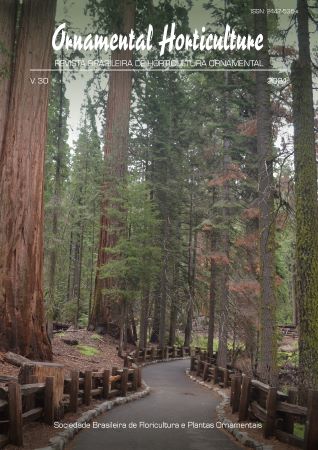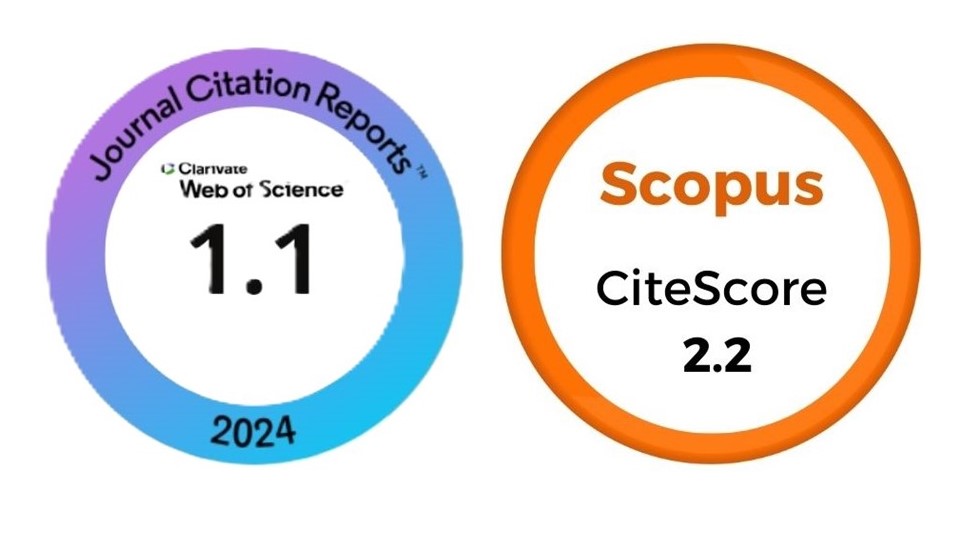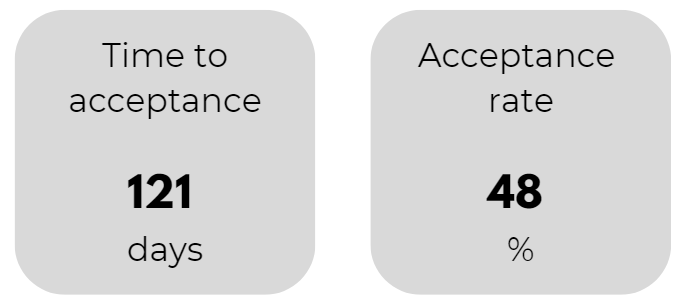Ornamental peppers: there is some accounting for taste
DOI:
https://doi.org/10.1590/2447-536X.v30.e242724Keywords:
Capsicum annuum L., potted plants, preference and acceptance surveys, questionnaireAbstract
Consumer preference and acceptance surveys associated with genetic improvement programs contribute to greater acceptance of new cultivars, in the competitive and dynamic ornamental plants market. Thus, the present work aimed to evaluate Brazilian habits related to the home cul- tivation of Capsicum spp. and preferences regarding four pre-cultivars of ornamental pepper, and the relationship with different socioeconomic factors. A virtual questionnaire containing 18 multiple-choice questions was shared by the authors in their contact networks, via social media and email. The responses were analyzed using descriptive statistics. The influence of socioeconomic factors on the respondents’ habits and preferences was analyzed using the Chi-Square test. The survey included 1045 respondents from all Brazilian states, of all age groups, income levels and education levels. It was found that home cultivation of peppers is widespread throughout Brazil, in rural and urban areas, mostly in pots. Ornamental peppers were widely ac- cepted among men and women of all income classes. Although a greater preference was observed for white flowers and elongated, triangular fruits, with five stages of maturity, regional, social, and economic differences influenced the choice for these attributes. Greater acceptance was also observed for the medium vessel (2 dm3) and the hybrid HPO 03. After registration, this will be an important technological product adapted to Brazilian conditions.
Downloads
References
ALVES, S.R.M.; LOPES, R.; MENESES, C.; VALENTE, M.S.F.; MARTINS, C.C.; RAMOS, S.F.; OLIVEIRA, I.; FRAXE, T.J.P.; COSTA, L.; LOPES, M.T.G. Morpho-agronomic characterization, sample size, and plot size for the evaluation of Capsicum chinense genotypes. Horticulturae, v.8, n.9, p.785, 2022. https://doi.org/10.3390/horticulturae8090785
AZEVEDO, C.D.D.O.; RODRIGUES, R.; SUDRÉ, C.P. Microsatellites for detecting inconsistencies in Capsicum cultivars registration in Brazilian database: more than meets the eye. Horticultura Brasileira, v.37, p.285-293, 2019. https://doi.org/10.1590/S0102-053620190306
BALL, H.L. Conducting online surveys. Journal of human lactation, v.35, n.3; p.413-417, 2019. https://doi.org/10.1177/0890334419848734
BARBOZA, G.E.; GARCÍA, C.C.; DE BEM BIANCHETTI, L.; ROMERO, M.V.; SCALDAFERRO, M. Monograph of wild and cultivated chili peppers (Capsicum L. Solanaceae). PhytoKeys, v.200, n.1, 2022. https://doi.org/10.3897/phytokeys.200.71667
BRASIL. Ministério da Agricultura e Pecuária. Pesquisa Pública de Cultivares Registradas. Available at: https://sistemas.agricultura.gov.br/snpc/cultivarweb/index.php. Acessed on: Aug 7; 2023.
BÚLGARI, R.; PETRINI, A.; COCETTA, G.; NICOLETTO, C.; ERTANI, A.; SAMBO, P.; NICOLA, S. The impact of COVID-19 on horticulture: critical issues and opportunities derived from an unexpected occurrence. Horticulturae, v.7, n.6, p.124, 2021. https://doi.org/10.3390/horticulturae7060124
CASTRO, A.C.R.D.; CORREIA, D.; SOUZA, F.V.D.; SOUZA, E.H.D.; FRANCO, J.; CAVALCANTI, T.B.; SILVA, D.A.D. Brazilian ornamental phytogenetic resources in Embrapa germplasm banks: obstacles and opportunities. Ornamental Horticulture, v.28, p.396-406, 2023. https://doi.org/10.1590/2447-536X.v28i4.2549
CHIOU, K.L.; HASTORF, C.A.; BONAVIA, D.; DILLEHAY, T.D. Documenting cultural selection pressure changes on chile pepper (Capsicum baccatum L.) seed size through time in Coastal Peru (7,600 BP–Present). Economic Botany, v.68, p.190-202, 2014. https://doi.org/10.1093/biolinnean/bly062
CRUZ, C.D. Genes Software-extended and integrated with the R: Matlab and Selegen. Acta Scientiarum; Agronomy, v.38, p.547-552, 2016. https://doi.org/10.4025/actasciagron.v38i4.32629
CUNHA, J.M.; CAVALCANTI, T.F.M.; SUDRÉ, C.P.; PIMENTA, S.; BENTO, C.S.; SILVA, L.R.A.; RODRIGUES, R. Testing ornamental chili pepper pre-cultivars. Functional Plant Breeding Journal, v.2, n.2, 2020. http://dx.doi.org/10.35418/2526-4117/v2n2a5
DARRAS, A.I. Implementation of sustainable practices to ornamental plant cultivation worldwide: A critical review. Agronomy, v.10, n.10, p.1570, 2020. http://dx.doi.org/10.3390/agronomy10101570
EGERER, M.H.; FRICKE, E.C.; ROGERS, H.S. Seed dispersal as an ecosystem service: frugivore loss leads to decline of a socially valued plant Capsicum frutescens. Ecological applications, v.28, n.3, p.655-667, 2018. https://doi.org/10.1002/eap.1667
GABELLINI, S.; SCARAMUZZI. S. Evolving consumption trends; marketing strategies; and governance settings in ornamental horticulture: a grey literature review. Horticulturae, v. 8, n.3, p.234, 2022. https://doi.org/10.3390/horticulturae8030234
HEISER, C.B.; SMITH, P.G. The cultivated Capsicum peppers. Economic Botany, v.7, n.3, p.214-227, 1953.
HUYLENBROECK, J.V.; BHATTARAI, KRISHNA. Ornamental plant breeding: entering a new era? Ornamental Horticulture, v.28, p.297-305, 2022. https://doi.org/10.1590/2447-536X.v28i3.2516
IBRAFLOR. Instituto Brasileiro de Floricultura. Números do setor. Available at: https://www.ibraflor.com.br/numeros-setor. Accessed on: Feb. 23; 2022.
JUNQUEIRA, A.H.; PEETZ, M. Brazilian consumption of flowers and ornamental plants: habits, practices and trends. Ornamental Horticulture, v.23, n.2, p.178-184, 2017. https://doi.org/10.14295/oh.v23i2.1070
KHANDPUR, N.; ZATZ, L.Y.; BLEICH, S.N.; TAILLIE, L.S.; ORR, J.A.; RIMM, E.B.; MORAN, A.J. Supermarkets in cyberspace: a conceptual framework to capture the influence of online food retail environments on consumer behavior. International Journal of Environmental Research and Public Health, v.17, n.22, p.8639, 2020. https://doi.org/10.3390/ijerph17228639
NASCIMENTO FILHO, H.R.D.; BARBOSA, R.I.; LUZ, F.J.D.F. Pimentas do gênero Capsicum cultivadas em Roraima, Amazônia brasileira: II. Hábitos e formas de uso. Acta Amazonica, v.37, n.4, p.561-568, 2007. https://doi.org/10.1590/S0044-59672007000400011
NAYAK, M.S.D.P.; NARAYAN, K.A. Strengths and weaknesses of online surveys. Technology, v.6, n.7, p.31-38, 2019. https://doi.org/10.9790/0837-2405053138
NEITZKE, R.S.; FISCHER, S.Z.; VASCONCELOS, C.S.; BARBIERI, R.L.; TREPTOW, R.O. Pimentas ornamentais: aceitação e preferências do público consumidor. Horticultura Brasileira, v.34, p.102-109, 2016. https://doi.org/10.1590/S0102-053620160000100015
PAIVA, P.D.O.; REIS, M.V.D.; SANT’ANA, G.S.; BONIFÁCIO, F.D.L.; GUIMARÃES, P.H.S. Flower and ornamental plant consumers profile and behavior. Ornamental Horticulture, v.26, p.333-345, 2020. https://doi.org/10.1590/2447-536X.v26i3.2158
RANIERI, G.R.; ZANIRATO, S.H. Comidas da horta e do mato: plantas alimentícias em quintais urbanos no Vale do Paraíba. Estudos Avançados, v.35, p.269-286, 2021. https://doi.org/10.1590/s0103-4014.2021.35101.017
REIS, S.N.; REIS, M.V.; NASCIMENTO, Â.M.P. Pandemia e isolamento social-importância da interação plantas-pessoas. Ornamental Horticulture, v.26, n.3, p.399-412, 2020. https://orcid.org/0000-0002-6770-9319
SALACHNA, P. Trends in ornamental plant production. Horticulturae, v. 8, n.5, p.413, 2022. https://doi.org/10.3390/horticulturae8050413
YANO, R.R; AMORIM, D.I.M. The agribusiness of Brazilian ornamental horticulture: a comparison between the agricultural censuses (2006 and 2017). Quaestum, v.4, p.1-20, 2023. https://doi.org/10.22167/2675-441X-2023637
VAN HERPEN, E.; VAN DEN BROEK, E.; VAN TRIJP, H. C.; YU, T. Can a virtual supermarket bring realism into the lab? Comparing shopping behavior using virtual and pictorial store representations to behavior in a physical store. Appetite, v.107, p.196-207, 2016. https://doi.org/10.1016/j.appet.2016.07.033
VILLANI, D.; REPETTO, C.; CIPRESSO, P.; RIVA, G. May I experience more presence in doing the same thing in virtual reality than in reality? An answer from a simulated job interview. Interacting with Computers; v.24, n.4, p.265-272, 2012. https://doi.org/10.1016/j.intcom.2012.04.008
Downloads
Published
Issue
Section
License
Copyright (c) 2024 Ornamental Horticulture

This work is licensed under a Creative Commons Attribution 4.0 International License.








